
On this day in Tudor history, courtier Sir John Scudamore was laid to rest. His wife served Queen Elizabeth I and appears to have suffered in doing so.
Find out what happened to Mary Scudamore in this #TudorHistoryShorts video:
[Read More...]
On this day in Tudor history, courtier Sir John Scudamore was laid to rest. His wife served Queen Elizabeth I and appears to have suffered in doing so.
Find out what happened to Mary Scudamore in this #TudorHistoryShorts video:
[Read More...]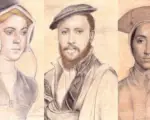
This week we put artist Anthony in the spotlight. He's 30 years old, from Birmingham, England and makes gorgeous drawings and paintings.

In this first part of This Week in Tudor History for week beginning 29th March, I talk about William Wager, a playwright and clergyman who picked wonderful titles for his works; the interesting life and career of Sir Ralph Sadler, who started out working for Thomas Cromwell and who went on to serve Henry VIII, Edward VI, Queen Jane (Lady Jane Grey) and Elizabeth I – oh, and I will tell you about his bigamous marriage! Then, finally, I will leave you with the dying King Henry VIII making his last will and testament.
[Read More...]
In this second part of This Week in Tudor History, historian Claire Ridgway introduces Sir Christopher Blount, a secret agent and rebel who married his master’s widow and whose stepson, the Earl of Essex was his undoing; Edmund Harman, the man who trimmed and washed King Henry VIII’s hair and beard, and who was rewarded for it; Mary Bassett, Sir Thomas More’s granddaughter, who was a highly educated Tudor woman and gifted translator; and Sir John Leveson (pronounced Looson), a Puritan and soldier whose later life was marred by a falling out over money.
[Read More...]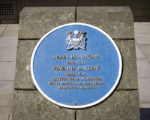
Benedictine monk Edward (religious name: Ambrose) Barlow was born at Barlow Hall in Manchester in 1585, the fourth son of Sir Alexander Barlow and his wife, Mary.
The Barlow family had converted to Protestantism, but this conversion had been somewhat reluctant. Ambrose’s grandfather had died in 1584 while imprisoned for his Catholic leanings, and his father had a large portion of his estate confiscated as a result of his initial refusal to conform to the new religion. On 30th November 1585, Ambrose was baptised, and following this, he adhered to the Anglican faith until 1607, after which he converted to Roman Catholicism.
[Read More...]
Today it's not only International Women's Day, a day where we acknowledge the social, economic, cultural and political achievements of women, but the whole of March we celebrate Women's History Month! A month in which we commemorate the contributions of women to events in history and contemporary society.
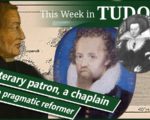
In this second part of This week on Tudor history for the week beginning 22nd February, I introduce a literary patron and her husband, a clergyman who ended up dying on a voyage far from home and being buried at sea, and a famous reformer whose peacemaking and pragmatic approach failed to heal rifts and please people. Oh and he ended up being dug up and posthumously tried for heresy, and burnt!
24th or 25th February 1618 – Death of Elizabeth Carey (née Spencer), Lady Hunsdon. Elizabeth was a renowned literary patron and was one of the Spencers of Althorp…
[Read More...]
In this first artists in the spotlight, we talked to Siria who is only 13 years old and is from Italy. She makes the most beautiful drawings of the Tudors, so we got in touch with her to chat about her art.
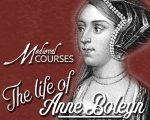
As it’s the 12th birthday of the Anne Boleyn Files website, the blog that started Claire’s career researching and writing, Claire is offering 25% discount code for her online course The Life of Anne Boleyn.
[Read More...]
In this second part of “This week in Tudor history” for the week beginning 15th February, I talk about how the death of a French duke led to an awful massacre, and how the imprisoned Margaret Douglas heard of her son’s murder, as well as introducing a countess who served all six of Henry VIII’s wives and who was close to his daughter Mary, and a noblewoman who managed to give birth twice while imprisoned in the Tower of London.
18th February 1563 – Francis, Duke of Guise, was wounded by a Huguenot assassin at the Siege of Orléans. He died a few days later and his death was a factor in the 1572 St Bartholomew’s Day Massacre.
[Read More...]
I know that many of you enjoy our weekly Tudor crossword puzzles and word searches, so you’ll be interested to know that I’ve collated some of them, plus some new ones, in a paperback book.
I did intend to get the book out in time for Christmas, but with one thing and another it just didn’t happen. Oh well, better late than never! It’s available right now. Here are the details…
[Read More...]
Elizabeth Stafford was born in 1497 and was the eldest daughter of Edward Stafford, 3rd Duke of Buckingham, and his wife, Eleanor, eldest daughter of Henry Percy, 4th Earl of Northumberland. Through her parents, Elizabeth was a descendant of King Edward III, and her paternal grandparents were Henry Stafford, 2nd Duke of Buckingham, and Lady Katherine Woodville, sister of Elizabeth Woodville. Her paternal grandfather was beheaded for treason against Richard III in 1483, which is a fate her father would suffer in 1521, beheaded for treason against Henry VIII.
[Read More...]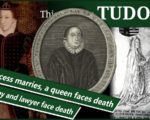
In this second part of “This week in Tudor history” for the week beginning 1st February, I talk about Tudor events and people associated with 4th, 5th, 6th and 7th February.
4th February 1495, in the reign of King Henry VII – Anne of York, daughter of the late King Edward IV, marries Thomas Howard, Earl of Surrey, at Westminster Abbey in London…
[Read More...]
A warm welcome to Emma and Merel who are joining the Tudor Society team today for a 5-month apprenticeship as part of their Journalism degree. We are thrilled to have them on board and you might remember them from the Mary, Queen of Scots video they produced for us back in 2019 – see below.
Here are their bios…
[Read More...]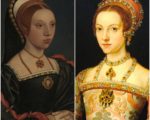
Lucy Somerset was born in around 1524 to Henry Somerset, 2nd Earl of Worcester, and his second wife, Elizabeth Browne, who is perhaps best known for her alleged role in Anne Boleyn’s downfall. Little is known of Lucy’s early life; however, as a noblewoman, it is assumed that she would have been accomplished in courtly manners. She was also involved with prominent courtiers, particularly the Brandon family through her aunt’s marriage to Sir Charles Brandon, Duke of Suffolk. This made Lady Anne Brandon and her sister Lady Mary Brandon her first cousins and important connections, both with prominent royal relations and friendships.
It is believed that Lucy was sent to the court of Henry VIII around 1540 aged 16, where she served his fifth consort, Katherine Howard, as a Maid of Honour during her marriage to Henry VIII. In 1542, when Katherine Howard was awaiting execution for treason, Lucy was supposedly mentioned in a letter by the imperial ambassador, Eustace Chapuys.
[Read More...]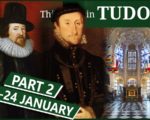
Part 2 of “This week in Tudor History” covers Tudor history events from 22nd to 24th January.
22nd January 1561, in the reign of Queen Elizabeth I – The birth of politician, philosopher, author and scientist Francis Bacon at York House, the Strand, London. Bacon is known as “the Father of the Scientific method” and Baconians believe that he was the true author of some or all of William Shakespeare’s plays…
[Read More...]
Happy New Year!
In this video that I did for the YouTube channel, I talk about King Louis XII of France, first husband of Mary Tudor, sister of Henry VIII, and his death on this day in history, 1st January 1515.
[Read More...]
On this day in history, 29th December 1605, in the reign of King James I, forty-seven-year-old Tudor nobleman George Clifford, 3rd Earl of Cumberland was buried at Holy Trinity Church, Skipton, Yorkshire. Clifford was a courtier, naval commander, privateer, Elizabeth I’s champion and a man she called her “rogue”.
Find out all about this Earl of Cumberland, his unhappy marriage, his voyages and what it meant to be the queen’s champion, in today’s talk.
[Read More...]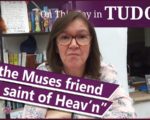
On this day in Tudor history, 27th December 1583, scholar and Puritan Katherine Killigrew died after giving birth to a stillborn child.
Katherine was the daughter of renowned humanist and scholar, Sir Anthony Cooke, and was known for her ability at writing poetry and her knowledge of languages, including Hebrew, Latin and Greek. She was a very accomplished Tudor lady.
Find out more about Katherine, and hear the epitaphs that were written in her honour, in today’s talk.
[Read More...]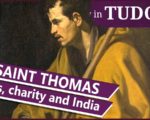
21st December in Tudor times was the Feast of St Thomas the Apostle, or Didymus or Doubting Thomas. The apostle who wouldn’t believe Christ had been resurrected until Christ appeared in front of him and he’d felt the nail wounds and the wound in his side.
Thomas was known for his generosity, and in Tudor times, those in need would go “a-Thomasing”, collecting alms. But there are also other traditions associated with the feast day, such as pie-making. And did you know that Thomas also has links to India?
Find out more about St Thomas, his story, his feast day and the traditions associated with him, in today’s talk.
[Read More...]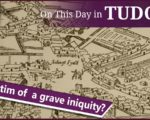
On this day in Tudor history, 20th December 1583, the day after his son-in-law, John Somerville, had been found dead in his cell, Warwickshire gentleman Edward Arden was hanged, drawn and quartered at Smithfield.
Arden, who was related to William Shakespeare’s mother, Mary Arden, and married to a member of the Throckmorton family, had been found guilty of treason, after being implicated in Somerville’s plot to kill the queen.
But was Arden actually guilty? Why didn’t others involved end up being executed too?
Find out more about Edward Arden and what happened in 1583, in today’s talk.
[Read More...]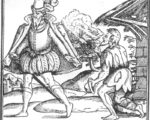
It’s the 21st December on Monday, the date of the feast day of St Thomas the Apostle in Tudor times, and during my research on that and the traditions associated with it, like collecting alms, my mind turned to poverty in Tudor times and how it was dealt with.
[Read More...]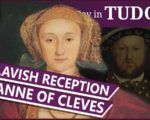
On this day in Tudor history, 11th December 1539, Anne of Cleves and her retinue were received at Gravelines, just a few miles outside of Calais, by Lord Lisle, Deputy of Calais.
Anne of Cleves was on her way to England to marry King Henry VIII, but her journey had been rather slow and she was about to be delayed even more.
The reception was rather lavish, with everyone dressed up to the nines. Enjoy a contemporary description from a Tudor chronicler in today’s talk.
[Read More...]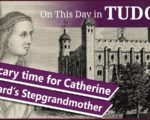
On this day in Tudor history, 9th December 1541, sixty-four-year-old Agnes Tilney, the Dowager Duchess of Norfolk and step-grandmother of Queen Catherine Howard, who was being detained at the Lord Chancellor’s home, was questioned regarding the location of her money and jewels.
Why? What was all this about?
Find out about this, why the dowager duchess ended up in the Tower, and what happened when she was indicted for misprision of treason, in today’s talk.
[Read More...]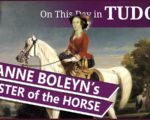
On this day in Tudor history, 8th December 1538, courtier and Master of the Horse to Queens Anne Boleyn and Jane Seymour, Sir William Coffin, died at Standon in Hertfordshire.
It is thought that he died of the plague because his wife Margaret wrote to Thomas Cromwell saying that Coffin had “died of the great sickness, full of God’s marks all over his body”.
Who was Sir William Coffin and what did the Master of the Horse do?
Find out in today’s talk.
[Read More...]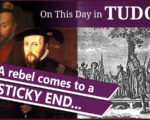
On this day in Tudor history, 7th December 1549, rebel leader Robert Kett was hanged from the walls of Norwich Castle after being found guilty of treason. His brother William was hanged the same day, but from the steeple of Wymondham Church.
In 1549, Kett was seen as a rebel and traitor who endangered the city of Norwich, but today Norwich pays tribute to him as “a notable and courageous leader in the long struggle of the common people of England to escape from a servile life into the freedom of just conditions”. Find out all about Robert Kett and Kett’s Rebellion in today’s talk.
[Read More...]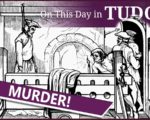
On this day in Tudor history, 4th December 1514, merchant tailor and leading member of the Lollard community in London, Richard Hunne died while imprisoned in the Lollard’s Tower at St Paul’s.
Hunne, who had been arrested for heresy in October 1514, was discovered hanging from the ceiling of his cell. The Bishop of London and his chancellor claimed that Hunne had used his own silk girdle to commit suicide, but a coroner’s inquest ruled that the hanging was faked and that Hunne was murdered.
But why was Richard Hunne murdered? And why had this merchant tailor been arrested in the first place? Was it just for heresy, or was there more to it?
Find out all about Hunne, his arrest, the charges against him, his death and what happened next, in today’s talk.
[Read More...]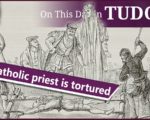
On this day in Tudor history, 1st December 1581, twenty-five-year-old Roman Catholic priest Alexander Briant was hanged, drawn and quartered at Tyburn, along with Ralph Sherwin and Edmund Campion.
Briant had been imprisoned, starved, racked and tortured in other awful ways, but he claimed that he felt no pain due to God’s help. He refused to give his interrogators the information he wanted, and he was tried for treason and suffered a full traitor’s death.
In today’s talk, I share Alexander Briant’s story, what led to his arrest, his account of what happened when he was tortured and his fellow prisoner’s account of what was done to him.
[Read More...]On this day in Tudor history, 26th November 1585, Catholic priest Hugh Taylor and his friend Marmaduke Bowes were hanged at York.
They were the first men executed under Elizabeth I’s 1585 statute which made it treason to be a Jesuit or seminary priest in England or to harbour such a priest.
These two Catholics were beatified in 1987 by Pope John Paul II as two of the 85 Martyrs of England, Scotland and Wales.
Find out more about these men and what this 1585 legislation was all about in today’s talk.
[Read More...]
Merry Christmas to you! December is here and we should make good cheer who wishes! Enjoy the December 2020 magazine!
[Read More...]